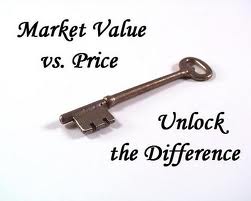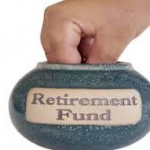Home > Retirement > Investor Risk, Value and Price
Investor Risk, Value and Price
 In large measure, the resolution of the international debt crisis revolves around whether the largest and most credit worthy nations (United States, Germany and Japan) have the wherewithal, willingness, and correct strategy to rescue the smaller less creditworthy nations – assuming they have the ability to save themselves which itself is not a sure thing. In something akin to a slow motion panic, worldwide credit policy that has devolved into “pretend and extend,” and “swift and decisive action” increasingly looks like the arcade game “whack-a-mole” (striking at symptoms rather than causes). One could almost find this humorous were it not for the disastrous potential consequences.
In large measure, the resolution of the international debt crisis revolves around whether the largest and most credit worthy nations (United States, Germany and Japan) have the wherewithal, willingness, and correct strategy to rescue the smaller less creditworthy nations – assuming they have the ability to save themselves which itself is not a sure thing. In something akin to a slow motion panic, worldwide credit policy that has devolved into “pretend and extend,” and “swift and decisive action” increasingly looks like the arcade game “whack-a-mole” (striking at symptoms rather than causes). One could almost find this humorous were it not for the disastrous potential consequences.
The overriding question surrounding the potential impact of multiple sovereign defaults is, “Will such an experience precipitate a global economic meltdown, or will it lead to extended and sluggish global economic activity?” Perhaps the only relevant personal question is simply, “Am I OK, and will I continue to be OK, irrespective of whatever manifests?”
Financial Ballast
It is with the recognition that if an abrupt out-of-the-blue event materializes – a massive financial dislocation, a terrorist attack in a major U.S. city, etc. – financial survival will confirm to those who have engineered financial wherewithal into their personal financial statements. This translates into holding high quality assets, little or no debt and (most underappreciated) abundant cash reserves. Historically, the Achilles heel of even the most seasoned investors has been inadequate liquidity to ride out the storm of unforeseen events.
In a world of normal distributions, anything beyond six months’ worth of cash reserves is considered superfluous, if not foolhardy – foolhardy because it is said to be “lazy” money. Our advice to maintain a minimum of three years’ cash reserves, preferably five years, is seen by many as redundant, if not cowardly, because in the reality of the impostor investor (and their bell-shaped distributions) Black Swans do not exist – notwithstanding all discordant evidence to the contrary.
The process of investment is so prosaic it is easily missed, particularly when “professional” investors are predisposed to couch their discussions and explanations with words that appear to be lifted from an ancient Greek manuscript – alphas, betas, and the like. In its essence, the process of investment is one in which the investor willingly forgoes current consumption in order to, hopefully, have the ability to consume (or not) a greater amount in the future. Notice that risk, within this context, has little to do with stock price gyrations and everything to do with one’s future purchasing power. Ancient Greek manuscripts notwithstanding, risk is simply the possibility that one’s hoped for increase in purchasing power never materializes – or worse, contracts.
Risk, Value, and Price
Benjamin Graham provided the intellectual fountainhead from which we spring. Perhaps one of Graham’s most important insights is the premise that, “investment is most successful when it is most businesslike. An investment operation is one that, upon thorough analysis, promises safety of principal and a satisfactory return.” Notice Graham speaks about a “satisfactory return,” not some kind of flamboyant return. Graham concludes his remark by asserting, “Operations not meeting these requirements are speculative.”
The value of an enterprise will ultimately be driven by the ability of the organization to generate free cash flow to its owners. As such, risk does not reside in volatility (beta); rather, risk resides primarily in one or more of these three possible occurrences:
- A disruptive technology undermines the prospects of the business. Buying the most profitable buggy whip company upon the dawn of the automobile would have been a sizeable error.
- The investor overpays for its ownership interests of even an excellent business.
- The investor mistakenly assesses the quality and/or durability of a business and its ability to generate free cash flow.
Whether the price of a stock moves in any particular direction is of interest to us exclusively if such price movements afford opportunities to buy inexpensively and sell dear. We are not intimidated by erratic price movements of a security, or a market. We singularly regard a stock as an ownership interest in a business whose value corresponds, pro rata, to the entire enterprise.
Because human beings are overwhelmed by entrenched behavioral failings, the actual price at which a security trades may vary widely from its enterprise value. Over time, however, the price and value of an enterprise have historically converged. As such, we are unmoved if the reported prices of our holdings remain stagnant, or their prices swing widely and frequently, providing the company’s free cash flow potential is not impaired and the balance sheet remains strong. I repeat: we are unmoved if the reported prices of our holdings remain stagnant, or if or their prices swing widely and frequently, providing the company’s free cash flow potential is not impaired and the balance sheet remains strong.
From this understanding, it is not a great leap to recognize that the greater the discount between price and value, the greater an investment’s “margin of safety” and the less the risk in acquiring and owning such a security. Alternatively, to purchase (or sell) a security on the basis that it is popular (or unpopular), or because it is rising (or falling) in price, or expected to rise (or fall) in price, is to abandon a sound “investment” practice and embrace “speculation” – and invite disappointment, or worse.
But why should this phenomenon – the convergence of price and value – occur? Consider the following testimony by the late Benjamin Graham to the Committee on Banking and Commerce on11 March 1955, chaired by Sen. William Fulbright.
Chairman Fulbright: …One other question and I will desist. When you find a special situation and you decide, just for illustration, that you can buy for $10 and it is worth $30, and you take a position, and then you cannot realize it until a lot of other people decide it is worth $30, how is that process brought about – by advertising, or what happens? (Rephrasing) What causes a cheap stock to find its value?
Benjamin Graham: That is one of the mysteries of our business, and it is a mystery to me as well as to everybody else. [But] we know from experience that eventually the market catches up with value.
Risk Free
A popular way to think about investment opportunities is to view them against what one might expect from “risk free” U.S. Treasury obligations. I will now let you in on a secret: there is no such thing as a “risk free” investment. As investors we get to choose which risks we are willing to assume. While the risk of traditional default of U.S. debt is remote – because we can (and likely will) print as much money as required to meet our obligations – the resulting currency debasement could hardly be considered risk free to the holders of intermediate and long dated U.S. obligations. Furthermore, with interest rates at historic lows, there is scant prospect for capital appreciation. Consider the following remarks by Warren Buffett which I have excerpted from the 2011 annual letter to stockholders of Berkshire Hathaway:
“Investments that are denominated in a given currency include money-market funds, bonds, mortgages, bank deposits, and other instruments. Most of these currency-based investments are thought of as “safe.” In truth they are among the most dangerous of assets. Their beta may be zero, but their risk is huge.
“Over the past century these instruments have destroyed the purchasing power of investors in many countries, even as the holders continued to receive timely payments of interest and principal. This ugly result, moreover, will forever recur. Governments determine the ultimate value of money, and systemic forces will sometimes cause them to gravitate to policies that produce inflation. From time to time such policies spin out of control.
“Even in the U.S., where the wish for a stable currency is strong, the dollar has fallen a staggering 86% in value since 1965, when I took over management of Berkshire. It takes no less than $7 today to buy what $1 did at that time. Consequently, a tax-free institution would have needed 4.3% interest annually from bond investments over that period to simply maintain its purchasing power. Its managers would have been kidding themselves if they thought of any portion of that interest as ‘income.’
“For tax-paying investors like you and me, the picture has been far worse. During the same 47-year period, continuous rolling of U.S. Treasury bills produced 5.7% annually. That sounds satisfactory. But if an individual investor paid personal income taxes at a rate averaging 25%, this 5.7% return would have yielded nothing in the way of real income. This investor’s visible income tax would have stripped him of 1.4 points of the stated yield, and the invisible inflation tax would have devoured the remaining 4.3 points. It’s noteworthy that the implicit inflation “tax” was more than triple the explicit income tax that our investor probably thought of as his main burden. “In God We Trust” may be imprinted on our currency, but the hand that activates our government’s printing press has been all too human.
“High interest rates, of course, can compensate purchasers for the inflation risk they face with currency-based investments – and indeed, rates in the early 1980s did that job nicely. Current rates, however, do not come close to offsetting the purchasing-power risk that investors assume. Right now bonds should come with a warning label.
Under today’s conditions, therefore, I do not like currency-based investments. Even so, Berkshire holds significant amounts of them, primarily of the short-term variety. At Berkshire the need for ample liquidity occupies center stage and will never be slighted, however inadequate rates may be. Accommodating this need, we primarily hold U.S. Treasury bills, the only investment that can be counted on for liquidity under the most chaotic of economic conditions…
“Beyond the requirements that liquidity and regulators impose on us, we will purchase currency-related securities only if they offer the possibility of unusual gain – either because a particular credit is mispriced, as can occur in periodic junk-bond debacles, or because rates rise to a level that offers the possibility of realizing substantial capital gains on high-grade bonds when rates fall. Though we’ve exploited both opportunities in the past – and may do so again – we are now 180 degrees removed from such prospects. Today, a wry comment that Wall Streeter Shelby Cullom Davis made long ago seems apt: “Bonds promoted as offering risk-free returns are now priced to deliver return-free risk.”
For the genuine investor, volatility is largely an entertainment but with a silver lining: it may occasionally create excellent investment opportunities as the less robust investor panics and sells their fractional ownership interests for pennies on the dollar.
Thinking, Fast and Slow
For those of us who like to think of ourselves as rational creatures, Dr. Daniel Kahneman’s most recent book, Thinking, Fast and Slow, will be at least a wakeup call, if not disheartening. Kahneman is a psychologist who won the Nobel Prize in Economic Science for his work that challenged the “rational model” of human judgment. In his book, Kahneman offers a remarkable account of his intellectual journey.
Kahneman models human thinking and behavior as operating within two distinct systems. System One is largely a rapid response, energy conserving, heuristic operating system. System Two can be described as a slow, deliberate, calculating and energy consuming system. Even when we believe we are operating in System Two (i.e. acting rationally), this is seldom the case. Thinking, Fast and Slow is filled with questions and exercises that provide you with a firsthand experience of how your own System One easily, and consistently, trumps System Two – even when you know you are being “setup.”
As something of a sidebar: in a short discussion of the investment management industry it seems ironic that Kahneman is blinded by his own System One reaction of the investment management industry which he regards as built on an illusion because Kahneman believes it is bereft of skillful agents. Paradoxically, he fails to recognize that market mispricing and inefficiencies are his System One trumping System Two.
Investing lies at the intersection of company specific financial analysis and behavioral psychology: where net present value meets fear, greed and envy. While it is essential to understand the nuances of financial accounting, by itself this knowledge is inadequate. It is critical to also understand how people think and behave and, most importantly, how you think and behave. Will you get so frightened by the prospect of a global financial crisis that you panic and move to cash and bonds? How will you behave if another 1930s financial meltdown manifests? (I am only asking the question. I am not suggesting this is in our future – but to cavalierly rule out the possibility would be at least irresponsible, if not reckless.)
Failures in rationality, driven by Dr. Kahneman’s System One processing of information, augmented by market failures, easily precipitate suboptimal decisions. For those of us not so biased, such events create opportunity. We all have these biases, however. As such, one must never become complacent, or so confidant, to believe one will not fall victim to irrational behavior. It is the human condition to behave irrationally… and most of us are unwilling, or simply naive, to acknowledge this reality. If you think I am exaggerating, read Kahneman’s book. As I said earlier, it may be disheartening. It is our hope that even if a worst case financial disaster occurs, that we will be sufficiently capable to operate in System Two and transcend our fears and biases… and take advantage of the opportunities created by the inappropriate behavior of others.
The range of economic and market scenarios approaches infinite. Notwithstanding, we must never lose sight that the world has enjoyed economic advancement for thousands of years – although in a very lumpy fashion.
According to outstanding investor Seth Klarman, over the past 30 years (ending 31 December 2011) the total return for long-dated U.S. Treasury Bonds eclipsed the total return of the S&P 500. As we survey the current environment, we see extraordinary risk in fixed income… and compelling opportunities in the select securities populating our portfolios. Macroeconomic difficulties notwithstanding, when great bargains manifest, only those without cash to invest, or suffocating under the veil of System One, would not be actively accumulating such compelling opportunities.
To learn more about Marshall Serwitz view his Paladin Registry profile on the Paladin website or visit his site directly
Other posts from Marshall Serwitz
Is the Market Headed Higher or Lower? Are Investors Impostors?
Is a tomato a fruit, or is a tomato a vegetable? Botanically, tomatoes are a fruit. But in...
Retirement Portfolios – Shifting from Accumulation to Distribution
Creating sustainable retirement portfolios is as much art as science. The tendency to view our annual capital projections...
Hedge Funds – The Good, The Bad and The Train Wreck Coming
The concept of “hedging”, or protecting investors from volatile and uncertain markets, is not new. In fact, the...




